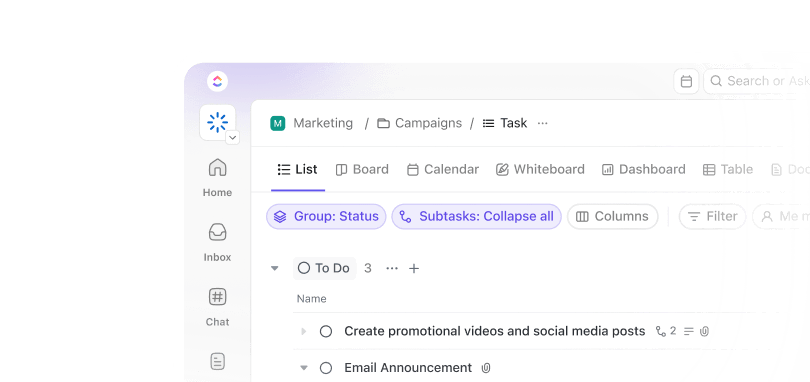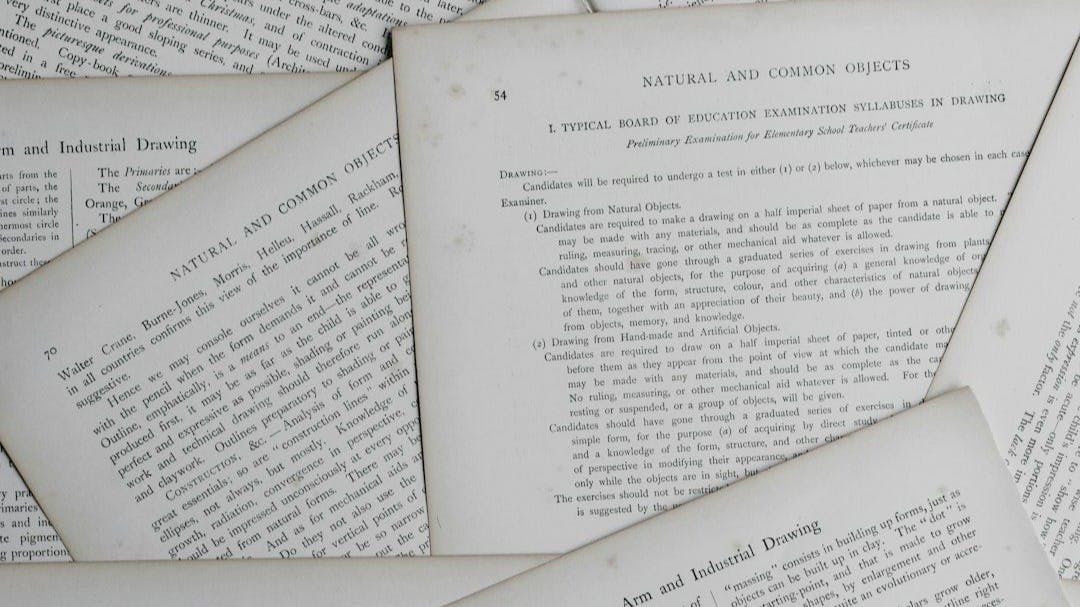Think of some iconic brand face-offs. Pepsi and Coca-Cola, Apple and Samsung, and Target and Costco for instance are well-known for being fierce competitors in their respective industries.
It’s fascinating how they continually strive to outdo each other through clever advertising, innovative products, and strategic marketing.
And if you’ve wondered just how these brands always stay neck-to-neck, the answer is deep competitive analysis.
In this blog post, we explain everything you need to know about competitor analysis, including examples and free templates to help you get started.
How to Conduct a Competitor Analysis Example for Success (+Templates)
⏰ 60-Second Summary
- Competitor analysis is a strategic tool to evaluate the competitive landscape of your business
- It gives you insights into competitor advantages and disadvantages and allows you to identify gaps and opportunities for improvement
- How to conduct a competitor analysis:
- Identify and categorize the competitors in your industry landscape
- Define key comparison metrics to get focused and actionable insights
- Gather competitor data from trusted and reliable sources
- Use SWOT analysis and Porter’s Five Forces model to analyze competitor strengths and weaknesses
- Benchmark your findings against your company’s performance to identify gaps competitors have leveraged and areas where you hold a competitive advantage
- Create a plan of action, assign roles and responsibilities with deadlines and key metrics to track progress towards your goals
- Some challenges include inaccurate data, underestimation of external risks, and data overwhelm
- is an effective tool that offers solid features to streamline your competitive analysis. Use features like Templates, Docs, and Whiteboards to nail your competitor research
What Is A Competitor Analysis?
A competitor analysis is a detailed study of the current and potential competitors in a specific market. Businesses use it to identify their competitors’ strengths, weaknesses, performance, and strategies so they can understand how to tweak their own marketing positioning for a better competitive advantage.
When performing a competitor analysis, you need to monitor a company’s products, pricing strategy, target audience, marketing tactics, and customer feedback.
An effective competitive analysis allows you to keep a close eye on what your competitors are doing, dodge pitfalls, and even uncover interesting growth opportunities for your business.
Why a competitor analysis is crucial
A well-executed competitor analysis is a great tool to understand what’s been working well for your competitors, what you can learn from it, and how you can stand out and do things differently to appeal to your customers.
Further, a competitive analysis is your strategy cheat sheet that helps you:
- Get a clear view of the competitive landscape
- Take a fresh look at your own strengths, weaknesses, opportunities, and threats (hello, SWOT analysis!)
- Figure out the best way to position your product
Moreover, a competitor analysis is a good way to anticipate shifts in the market landscape so that you’re always in line with industry trends and changing customer demands.
How to Conduct A Competitor Analysis
A thorough competitor analysis will give you valuable insights that can sharpen your strategies. Here’s a step-by-step breakdown of how you can systematically analyze your competitors.
1. Identify your competitors
A competitor analysis begins by identifying the different competitors in your target market.
You can classify competitors into three categories:
- Direct: Businesses that offer the same product or service to the same customers as you. Some popular examples are Coca-Cola vs Pepsi, Nike vs Adidas, or Uber vs Lyft
- Indirect: Companies that offer different products but satisfy customer needs similar to your business. Think of Airbnb vs hotels. Both cater to the accommodation needs of travelers but are different in how they provide it
- Emerging competitors: Businesses that are newer to the market and could impact your business in the future. A good example is Tesla vs Rivian. Tesla is well-established in the electric vehicle space, but Rivian is quickly gaining attention since it caters to the same market segment
✨Bonus Tip: A good practice is to identify at least the top few competitors in each category for a more thorough analysis. You can use competitor analysis tools to organize the data you collect, identify patterns, and create strategies.
2. Define key metrics for comparison
Once you’ve listed your competitors, you need to decide the specific areas you want to compare.
After you’ve identified these areas, you can tie each one to a few key metrics for focused and actionable insights. This will give you a better picture of how your offerings compare to those of your competitors.
Here’s an overview of some of the common areas of comparison and related metrics:
- Products or services: Note the unique features and functionalities, user satisfaction, product reviews, variety of offerings, product innovation, and efficiency of service delivery in your competitive landscape
- Pricing: Track price points, discounts and offers, cost vs. benefits, and price elasticity
- Marketing strategy: Monitor their SEO rankings, content strategy, paid ads, brand messaging, social media engagement, and product marketing strategy
- Customer experience: Track CSAT scores, customer retention rates, support response time, and user journeys
- Sales and distribution: Compare sales conversion rates, geographic reach, distribution channels, sales tactics, and revenue streams
- Financial performance: Check for revenue growth, profit margins, market share, cost structure, and investments
✨Bonus Tip: Prioritize the metrics that matter to your business and focus on them alone so you don’t end up diluting the effectiveness of your decision-making process.
3. Gather enough data on your competitors
Now that you know which metrics you want to track, identify the top sources from which you can collect reliable data on your indirect and direct competitors.
For instance, tools like Google Analytics, SpyFu, and SimilarWeb can be used for website audits. Third-party review sites like G2, Trustpilot, and social media provide insights into what users think about your competitors.
✨Bonus Tip: If you want financial information, a good idea is to look at public records or investor reports. You can even opt for AI-powered competitor analysis tools like
- Kompyte to track competitor actions across different platforms
- Brain to get insights into your competitor’s moves and strategies
- Cohesive to identify patterns or trends in your competitor’s content
4. Analyze competitor strengths and weaknesses
This is the part where you study the areas where your competitors fare better and where you have an edge. Depending on your research goals, frameworks like SWOT analysis or Porter’s Five Forces can be helpful tools.
To understand this better, consider using SWOT analysis to focus on finding each competitor’s individual strengths and weaknesses.
On the other hand, Porter’s Five Forces would be more useful in studying the broader industry environment and the systemic factors that are likely to impact all your competitors.
Irrespective of which framework you use, remember to ask yourself some key questions, such as:
- What is their market share compared to other competitors?
- How do their pricing strategies compare to industry standards?
- What is their customer acquisition and retention strategy?
- How does their marketing team respond to customer feedback and reviews?
✨Bonus Tip: Explore the strengths and vulnerabilities of your competitors with an easy-to-use Porter’s 5 Forces Template that can give a well-rounded picture of the direct and indirect competition within your industry.
5. Benchmark your findings
After you’ve identified your competitors’ strengths and weaknesses, compare the findings against your company’s performance. Doing this gives you the big picture and tells you if there are gaps your competitors have capitalized on. You can also identify areas where you have a definite competitive advantage that you can improve further.
✨Bonus Tip: Streamline your benchmarking process by using a competitor analysis matrix. It presents competitor data in a visually engaging, organized manner and makes it easier to compare your business metrics against those of your competitors.
6. Create a plan of action
Based on the results of your competitor analysis, identify the top three to four areas where you want to start making improvements. Then, develop SMART (Specific, Measurable, Achievable, Realistic, Time-Bound) goals for each area so your efforts stay focused and progress can be tracked effectively.
For example, if you feel the need to improve your marketing strategy to gain an edge over your competitors, you set a goal to improve website traffic by 30% in the next six months. Your SMART goals would look like this:
- Target 15 high-volume keywords identified during competitor analysis
- Increase monthly organic sessions by 30%
- Allocate three content writers for the project and a budget of $2000 for SEO tools
You can apply this to other areas and find different ways to highlight your USP to stand out in the market.
✨Bonus Tip: Focus on changes that will have an immediate impact, like optimizing website SEO or improving social media engagement, while also planning for bigger, long-term shifts such as product innovation or brand positioning.
How can help?
Competitor analysis is a multi-step process that involves a lot (and we mean a lot!) of planning, data collection, analysis, and strategizing. Add to the mix the stress of dealing with endless spreadsheets and scattered notes, and you’ve got a recipe for overwhelm.
can be your ultimate productivity sidekick.
It helps you stay organized, collaborate like a pro, and bring all your tasks, conversations, data, and ideas under one roof. It is the everything app for work, streamlining complex processes by ensuring everything is organized and accessible.
1. Collaborate with your team with Docs
Say goodbye to endless documents and scattered information.
Use Docs to maintain a single, easily accessible repository of notes, data, and observations. Whether you want to list down competitor insights or share key takeaways from an industry report, Docs is the perfect tool to manage any kind of information.

You can invite team members to edit the doc, share their feedback, and assign comments. Everyone can contribute in real time and link Docs to tasks to preserve the context for everyone involved in the process.
Brain
Use Brain, the AI-powered assistant, to create competitive analysis reports, brainstorm ideas, and create actionable plans quickly
You can also use it to summarize meeting notes and highlight tasks, deadlines, and assignees with the power of AI. This way, you don’t have to manually review notes or run the risk of missing key details.


2. Ensure insightful reporting with Dashboards
Gather critical data and represent them in a visually engaging manner using Dashboards. They are customizable and can give you a bird’s eye view of team workloads, project progress, marketing campaigns, and more.


Dashboards make it easier to monitor specific performance metrics and gauge insights at a glance. They ensure your reports are dynamic and presentation-ready so you can spot trends and identify potential issues before they escalate. Visual elements like charts and graphs also make it easier to represent complex data, making your competitor dashboards easier to understand.
💡Pro Tip: If you want specific insights about anything, simply ask Brain and it will search every dashboard in your workspace to give you the most relevant insights. You don’t have to spend time sifting through documents or asking around for the information you need.
3. Ready-to-use templates
To make planning easier, pick a free competitive analysis template by for a structured framework with predefined sections to help you systematically gather and analyze competitor information.
Competitive Analysis Template
The Competitive Analysis Template, for instance, allows you to present competitor insights on a whiteboard. The interactive view helps you better understand your competitor’s strengths and weaknesses and the industry landscape. You can add or modify elements as needed for your analysis.
With this template, you can:
- Create a list of direct and indirect competitors and track their activities using ’s Board view
- Visualize critical data to create a competitive analysis report
- Map out a strategy and identify milestones for each task using ’s Gantt Chart view
Competitive Analysis Pricing Template
Another super useful framework is the Competitive Analysis Pricing Template. It is designed to help you study your competitor’s products and services and how they’re being priced. You can compare pricing models and analyze how customers respond to each of them.
The template helps you:
- Map out different competitors, their quality points, and pricing plans to create a comprehensive competitive analysis report
- Gain a better understanding of the market you’re operating in through industry analysis
- Identify price points where you have a significant advantage over competitors
SEO Competitor Analysis Template
Yet another handy tool is the SEO Competitor Analysis Template, which is ideal for building a solid SEO strategy.
It gives you insights into how your competitors are doing with respect to SEO and if there are any opportunities you can leverage for your content strategy. The SEO analysis template is also great if you want to stay updated with the latest SEO trends.
You can use this template to:
- Create a spreadsheet and list down domains and keywords used by competitors
- Identify SEO opportunities where you can outrank your competitors
- Analyze competitor websites and their backlinks
4. Manage tasks efficiently with Tasks
A good way to execute your competitor analysis effectively is to ensure that team members know exactly what to do during each stage of the process.
Use Tasks to assign clear action items for every team member, complete with due dates and reminders, so nothing gets missed.
Add details like project date, budget, task category, and contact information for every task with Custom Fields. This ensures task assignees have all the information they need to complete their work.


You can also assign color-coded labels to your tasks to help your teammates identify tasks that need immediate attention.
📮 Insight: 92% of workers use inconsistent methods to track action items, which results in missed decisions and delayed execution.
Whether you’re sending follow-up notes or using spreadsheets, the process is often scattered and inefficient. ’s Task Management Solution ensures seamless conversion of conversations into tasks—so your team can act fast and stay aligned.
Examples of A Competitive Analysis in Action
To give you a better idea of how a competitive analysis works, here are some real-life examples of businesses flexing their creative muscles to get ahead.
1. Burger King vs. McDonalds
In the 1970s, McDonald’s held the largest market share in the fast food industry. Burger King was still making its mark, and the two chains were engaged in serious rivalry to determine who stood out in the burger wars.
Burger King and McDonald’s offerings, pricing, and marketing strategies closely uncovered some clever opportunities for product differentiation.
🔥 A good competitive analysis example is the ‘Whopper Detour,’ where Burger King used geofencing to target customers within 600 feet of any McDonald’s location through their mobile app. Customers could pre-order a Whopper for just a cent, and the Burger King app would direct them to the nearest outlet to pick up their order.
2. Lyft vs. Uber
Another example of a competitor analysis is Lyft’s study of Uber’s pricing strategies, loyalty programs, and growth, which helped it create a stronger presence in specific cities to cater to local needs.
🔥 Moreover, Lyft also brands itself as a ‘warmer’ alternative to Uber for a more customer-centric experience. As a result, Lyft has evolved considerably, catching up with Uber in terms of market share and continuing to expand its offerings to stay competitive.
3. Netflix versus other OTT platforms
Netflix is one of the key players in the streaming and entertainment industry and stands out against other competitors like Prime Video, Disney+, and Apple TV+.
🔥 Here’s what Netflix does better compared to its competitors:
- They use various competitive intelligence tools to identify what’s working for their rivals and also to stay up-to-date on the latest trends
- The platform stands out due to its ability to constantly adapt its offerings and develop original content in response to customer needs
- Detailed data analysis of competitor content libraries allows Netflix to identify which types of content are popular and develop similar genres to attract more viewers.
- Netflix also closely monitors audience sentiment toward their rivals through social listening
Challenges with Competitor Analysis and How to Overcome Them
Let’s take a look at some common challenges with competitor analysis and how you can tackle them.
1. Inaccurate data
Erratic data can lead to poor decision-making and misguided strategies. It can skew your insights and impact major business decisions like pricing and product development.
Solution:
✅ Collect data from multiple credible sources
✅ Use competitive intelligence tools or market research platforms to get more accurate competitor insights
2. Overlooking indirect competitors
You may miss out on alternative product offerings you haven’t really considered. Even though indirect competitors may not be on the radar, changing market dynamics can make them a potential threat.
Solution:
✅ Leverage Porter’s Five Forces to identify any threats of substitution
✅ Monitor competitors in adjacent markets
3. Difficulty in quantifying competitive advantage
Factors like brand loyalty, innovation, and customer sentiment are pretty hard to quantify. As a result, it can be difficult to understand the true extent of your competitor’s advantage.
Solution:
✅ Use social listening to identify what customers think about competitors actively
✅ Leverage brand valuation models to understand the financial value of a brand. This includes income-based valuation, market-based valuation, or cost-based valuation
Practical Tips for Effective Competitor Analysis
Below are some useful tips for effective competitor analysis.
- Always monitor new technological innovations and trends so you can capitalize on them when the opportunity comes ✅
- Use customer segmentation to identify the exact audience your competitors target and how they engage them ✅
- Analyze the different marketing channels used by competitors so you can track which ones perform better and incorporate them into your sales and marketing strategy ✅
Establish Your Competitive Edge with
Competitive analysis is about staying sharp and flexible, adapting to new information, and pivoting your strategy as and when needed.
When done right, competitor analysis can help you identify market gaps, respond faster to market trends, improve product development, and more. It’s like a roadmap to success, guiding you to smarter decisions and allowing you to outmaneuver your competition.
If you want a way to organize your data, get creative insights, and streamline your analysis, is your best friend. It’s got everything you need to manage your tasks, collaborate efficiently, and stay on top of deadlines.
So, if you’re ready to beat your competition, sign up on today and turn your competitive insights into action.


Everything you need to stay organized and get work done.















